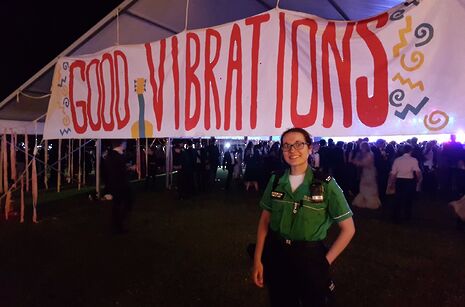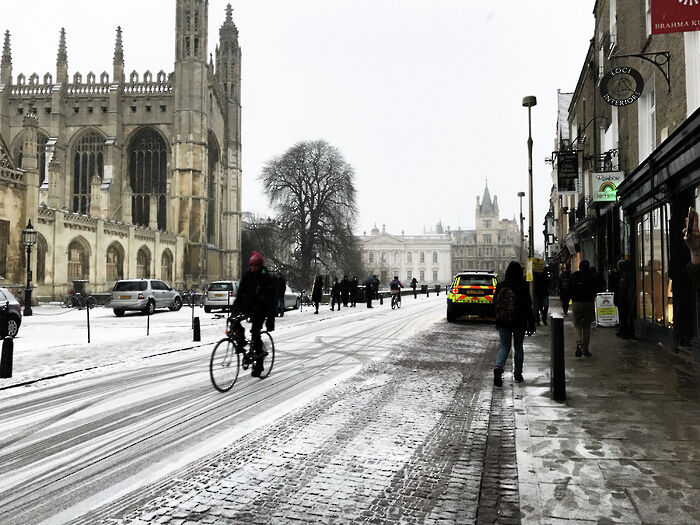Why I learnt first aid
First aid has given me the skills and confidence to save lives

Triggered by hot and humid weather, I started breathing oddly: my chest wasn’t rising and falling like normal but heaving up and down. I couldn’t make the usual noises of a toddler. My breath was raspy, and I was making a strange wheezing sound. It was one of two significant and related moments for my mum.
Almost ten years earlier, my grandad had had a heart attack. He was in King’s College Hospital at the time, under observation in a unit at the forefront of treatment for cardiac conditions. Because of this, he received rapid medical attention that would have been delayed had he been at home, and he lived to see the birth of myself and my sister, and the start of our childhood.
It’s about being prepared for the moments in your life you try not to imagine
My mum shares these two stories because they illustrate the importance of first aid training. Without it, she wouldn’t have recognised that my grandfather’s agitation, irregular pulse and clammy, grey skin could have indicated an impending heart attack. Without it, he may not have been in hospital when it happened, and the damage could have been far greater. And if she hadn’t known to remain calm and take me straight to A&E when I was a toddler having an asthma attack, the situation could have escalated into one that went very differently for me, too. Her actions in these situations made the difference between life and death.
With these stories in mind, and seeing university as a chance learn something new (beyond, of course, my degree), I committed to becoming a first aider. As a fresher, I joined Cambridge University First Aid Society and the associated Cambridge Universities’ St John Ambulance unit. You may have seen us in green—and sometimes on bikes—at events such as May Balls, Bumps, the Junction and Strawberry Fair.
Learning first aid gives you the confidence to help when others will not. Ask yourself: have you ever come across an incident where someone has been injured—maybe it’s a road traffic accident—and had a feeling of relief when you realised that someone else had already taken charge? Now imagine this accident takes place on a remote country road. There’s no one around for miles and an ambulance could take over an hour to reach you. Would you know what to do? Even with basic first aid training you can overcome the fear that you won’t be able to help, or would simply make things worse.
First aid can make the difference between life and death
Every year, thousands of people die in situations where first aid could have saved their life. Research from the British Red Cross has shown that most adults would not be able to administer life-saving first aid in an emergency. Only five percent of the adults they surveyed felt confident, knowledgeable and willing to help someone who was bleeding heavily, was unresponsive and breathing, or was unresponsive and not breathing. Of those aged 16-24, 69% responded that they would be willing to give first aid to someone who was unresponsive and not breathing, but only 16% would have the confidence and knowledge to do so. The significance of this is not immaterial: the British Heart Foundation stated that survival figures for out-of-hospital cardiac arrests could increase from 1 in 10 to 1 in 4 if more young people knew how to perform effective CPR.
First aid is not just about saving lives. It develops important characteristics that, frankly, society could do with more of, such as empathy, respect and an understanding of consent. You need to know how to treat people appropriately depending on, for example, their age, sex or disability. Sometimes it’s challenging: I’ve treated individuals with whom I could not easily communicate, occasionally owing to a language barrier and once because of a degenerative disorder that my patient had. But you learn to adapt. Cartoon sketches of faces in various states of distress whilst motioning to parts of the body is a valid way to determine the level and location of pain someone is experiencing, for example.
To those looking to develop a new skill this year, I cannot recommend first aid enough. And as a trained first aider, you’re given the opportunity to put these skills into practice. From the rainbow flags and carnival atmosphere of the Pride parades to the tense, expectant silence of spectators at Wimbledon tennis—St John Ambulance covers some of the country’s most high-profile events. I’ve been part of the over 1000 volunteers who descend on London to provide first aid at the Marathon and experienced the magic of more May Balls than I could ever have afforded to attend.
At the end of the day, it’s about being prepared for the moments in your life you try not to imagine. Whether it’s a drunk friend you’re more worried about than usual, or a stranger in an accident you encounter on the street: make sure you have the skills to be the difference.
 News / Clare Hall spent over £500k opposing busway 24 December 2025
News / Clare Hall spent over £500k opposing busway 24 December 2025 Comment / The ‘class’ of Cambridge24 December 2025
Comment / The ‘class’ of Cambridge24 December 2025 News / Caius mourns its tree-mendous loss23 December 2025
News / Caius mourns its tree-mendous loss23 December 2025 News / Eight Cambridge researchers awarded €17m in ERC research grants27 December 2025
News / Eight Cambridge researchers awarded €17m in ERC research grants27 December 2025 Comment / League tables do more harm than good26 December 2025
Comment / League tables do more harm than good26 December 2025









